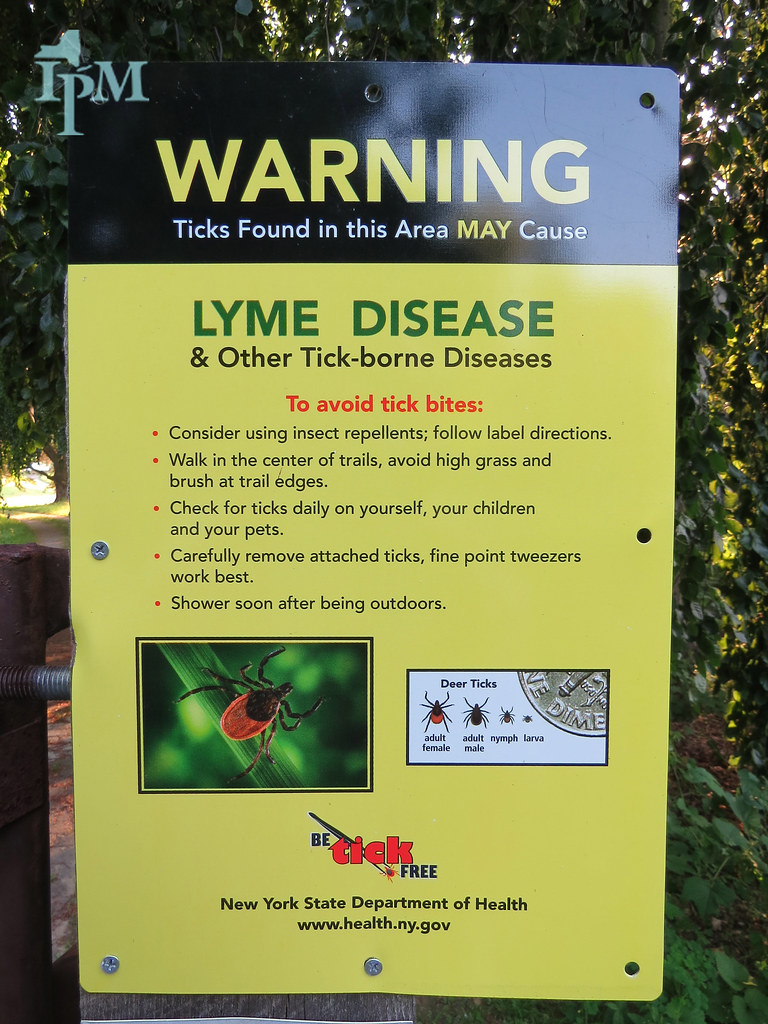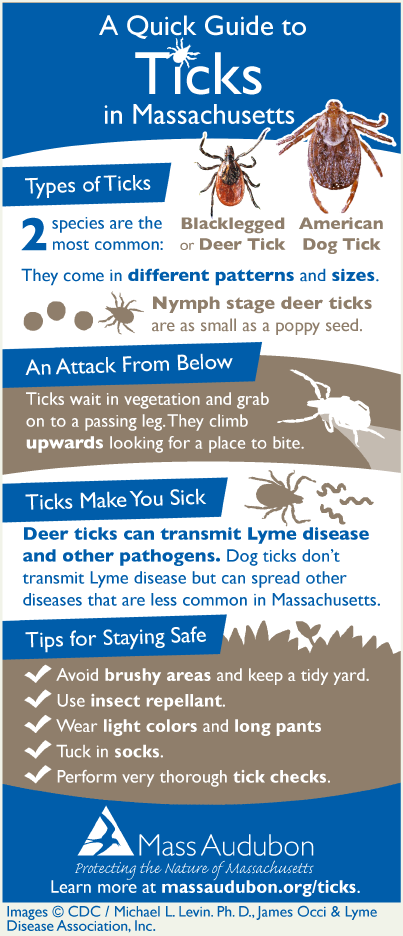Ticks Are Active In Western Massachusetts

Photo: flckr.com. (CC BY 2.0)
Sources: Mass Audobon and mass.gov
Several local residents have reported acquiring tick bites after walking in the woods or in parks during the last two weeks. In Western Massachusetts ticks typically emerge in mid to late March and are active and looking for food. Spring hikers are often caught unprepared and are less likely to take precautions of using insect repellents and insecticides while the weather remains cold. In Massachusetts, ticks are known to be carriers for several diseases, most commonly Lyme, anaplasmosis, and babesiosis. Other tick-borne diseases that are more rare, but still occur in Massachusetts are tularemia, Rocky Mountain spotted fever, Borrelia miyamotoi, and Powassan virus. Tick-borne illnesses can be very severe, and taking steps to avoid tick bites is important. Click here for more information on tick-borne diseases and how to prevent them.
Different tick species spread different diseases. There are two species of ticks common in Massachusetts—the Deer Tick (Ixodes scapularis) and the Dog Tick (Dermacentor variabillis). An adult Deer Tick is substantially smaller than the more common Dog Tick. However, size is not always a useful indicator since an engorged tick can be several times the size of one that has not fed. And while only Deer Ticks carry Lyme disease, it is far better to avoid ticks altogether than to attempt to differentiate between the two species.
The MA department of public health encourages people engaged in outdoor activities in woods or brushy areas to take precautions to avoid becoming infected with a tick borne disease
Ticks and Lyme Disease (Source: Mass Audubon)
The only way to avoid getting Lyme disease is to avoid being bitten by an infected tick. Mass Audubon recommends the following:
- Know Where They Hide: Contrary to popular belief, ticks do not jump or fall from trees; in fact, they’re blind and find their hosts by crawling to the top of low-lying vegetation, such as grass and shrubs, where they wait for passersby to latch onto. And, since tick bites are usually painless, most people don’t even know when they’ve been bitten.
- Watch Where You Walk: Stick to wider trails and avoid overgrown pathways in their preferred habitat: wooded or bushy areas where the ground is covered in high grass or leaf litter.
- Dress Right: Don light-colored socks, pants, and a long-sleeved shirt and tuck in everything (pants into socks, shirt into pants). While this look isn’t likely to win any fashion awards, it will allow you to spot ticks, which can be as small as a poppy seed.
- Bring On the Bug Juice: To help repel ticks and other creepy crawlers, like chiggers, use a DEET-based product on areas of exposed skin. Just remember to follow the label instructions when applying insect repellent!
- Perform Tick Checks: Upon heading indoors, perform a full-body “tick check,” taking special care to inspect the areas between your toes and the backs of your knees, as well as your groin, armpits, neck, hairline, and ears. Remember to check your children, pets, and gear, too!

More about tick-borne disease prevention
How To Check For Ticks
The best way to reduce your chances of getting Lyme disease is to do a proper tick check after being outdoors (even if it’s just in your backyard). Here’s how:
- Step 1: Scour your clothing. Ticks latch on to clothing from the top of low-lying vegetation, such as grass and shrubs, so pants are a good place to start. Once clothing is removed, throw it in the wash.
- Step 2: Scour your body (or your kid’s body). Ticks like to hide in crevices. Be sure to look under the arms, behind and inside ears, around the hairline, through the scalp, behind knees, between toes, inside belly buttons, and around the waist.
- Step 3: Take a warm shower or bath. This may help dislodge any ticks that haven’t yet attached. And also provides another opportunity to look for any stragglers.
Found A Tick?
If you discover an embedded tick, use fine-tipped tweezers to grasp the tick as close to your skin’s surface as possible and pull straight out with steady, even pressure. If you wish to have it tested for Lyme, immediately place the tick in a sealable plastic bag. (For a video on tick removal look here).
Cleanse the bite area with rubbing alcohol and wash your hands with soap and water. Make a note of the date as well as the location on your body where the tick was discovered and call your doctor to determine next steps.
Reporting and More Information
University Of Massachusetts Tickreport: The University of Massachusetts Laboratory of Medical Zoology provides tick testing service to public individuals and agencies seeking more information about the risk of dangerous pathogens. To find out more or send your tick to college!, see https://www.tickreport.com/
Tick Identification And Testing Facilities
The Town of Amherst Health Department does not offer tick testing or identification. Follow the link for other organizations that offer tick identification and or testing services for a fee. However if you have any situation that may affect your health, please contact your healthcare provider. Tick Testing Resources.
More Information On Tick-Borne Diseases
Massachusetts Department of Public Health
Mass DPH maintains a web site with a lot of information on tick-borne diseases.
CDC
The Centers for Disease Control website has data on tick-borne disease found in Amherst including Lyme Disease, Anaplasmosis and Babesiosis, as well as emerging tick-borne diseases.

1 thought on “Ticks Are Active In Western Massachusetts”